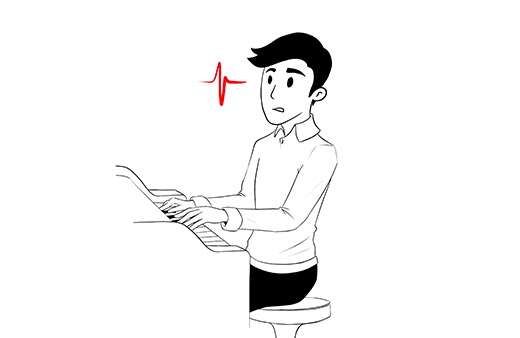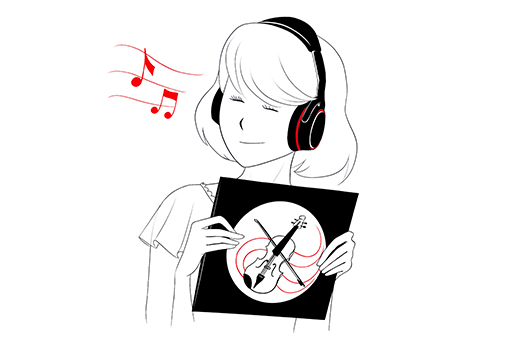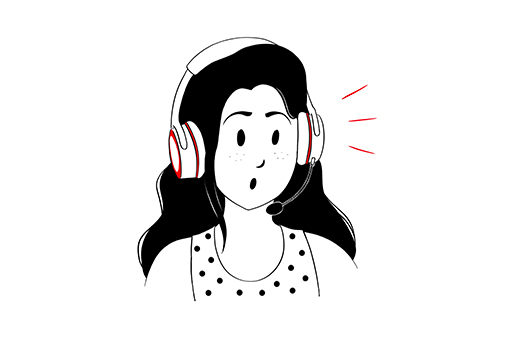Neuroscience & linguistic

Pronounce is a brain training program.
What does that mean?
Why repeat?
Repeating is fundamental to mastering any kind of skill, such as speaking a foreign language fluently.
Repeating activates many cognitive processes:
Process #1
Bridge between the meaning and the sound.
This workout builds an essential bridge between the meaning and the sound. It puts the auditory system on the front line while bypassing the visual system. In opposition with reading, our brain is not tempted to convert letters and words into familiar sounds (similar to our own mother tongue).
If you read a book, the letters are similar to the ones you use in your mother tongue. This leads you to read with the sounds of your mother tongue.


Process #2
From passive to active
We go from a passive process that involves translation (listening) to an active process that avoids translation completely.
When you repeat in an automatic way, you focus more on pronunciation and less on the meaning. It is precisely the way babies acquire language, by imitating adults and deducing the sense from the context and the tone.
Process #3
Activation of the phonological memory.
We activate the auditory memory, which helps to better retain vocabulary and grammatical structures. This cognitive process is called phonological memory and is involved in short and long term retention.
Think about the last time you tried to memorize a phone number and you just repeated it several times to activate your audio memory.


Process #4
Chameleon effect.
We employ a powerful cognitive process that characterizes us as social individuals. It is a process by which we instinctively try to reproduce and imitate what we perceive as good.
It has been demonstrated that if you speak with someone who has a different accent, your brain subtly and unconsciously shifts your voice to sound more like this person.
Think about people who progressively lose their accent when they move to another region/location.
Process #5
Self-correction Faculty
We encourage self-correction, which is involved in the process of mastering any kind of skill. Comparing the sound that you are producing with the sound you have just heard helps you to perceive the differences. If you repeat this practice intensively you progressively learn to anticipate your own mistakes.
It is thanks to your natural ability to self-correct that you are able to know when you are off key when playing an instrument or singing in the shower: that little detail that disrupts the feeling of harmony.

Why filter sounds?
During our childhood we learn to select units of sound that are compatible with our linguistic environment, and to not listen to those which do not belong to the phonetic structures of our social environment.
During the course of our development, we thus become programmed with the rhythm of our own language.
By applying a filter that activates and deactivates according to the rhythm of the voice, variations in sound energy are created without changing the nature of the message.
These variations make it easier to assimilate a foreign language by breaking our rhythmic habits. We gradually teach our brain to assimilate other rhythms.
This filter is based on the Tomatis Method Technology.

Why use bone conduction?
Cover up your ears and talk. Do you hear yourself ? This is due to bone conduction

The sound of your voice is transmitted naturally by the vibration of the bones in the skull. This transmission mode is natural, 10 times faster than through the air and of far better quality.
By providing music, speech, and our voice feedback through bone conduction, we help the brain to better analyze and retain the information.
Why use music?
At the end of the day, language is sound, as is music.
A language is therefore first of all a kind of music, that is, a set of specific rhythms and frequencies. These rhythms and frequencies constitute the fundamental sound substrate on which all other acquisitions will be based (for example, lexical, syntactical, and semantic acquisitions).
The goal of filtered music is to help the brain to adapt itself effectively to English musicality, so that you can reproduce these rhythms when you speak.

Why do you provide auditory feedback technology ?
The auditory feedback is the natural process by which every individual perceives, analyzes, assimilates, and continuously adjusts the information individually received and produced through sound.

In association with the dynamic filter, the auditory feedback technology modifies the perception of your own voice to fit English rhythms.
In turn, your voice is instantly and subtly modified. It works as a booster that facilitates the integration of the rhythms.
Titre bloc SEO
Montes nascetur ridiculus mus mauris vitae ultricies leo. Posuere morbi leo urna molestie at elementum eu. Ipsum dolor sit amet consectetur adipiscing elit pellentesque habitant morbi. Suspendisse potenti nullam ac tortor vitae purus faucibus. Quis blandit turpis cursus





How to repeat efficiently?
From one simple sound to a collection of words, you are invited to repeat a series of words several times until it makes a full sentence.
It is like fragmenting a choreography : you learn the first move, then the second move and then you combine the two moves together and so on until you master the full dance.
Also, the first time you hear a sentence, your brain prediction is poor since it is hard to anticipate the words from the context only.
In fact, by repeating an increasingly complex combination of words several times, our approach activates two important cognitive processes: phonological awareness and brain prediction.